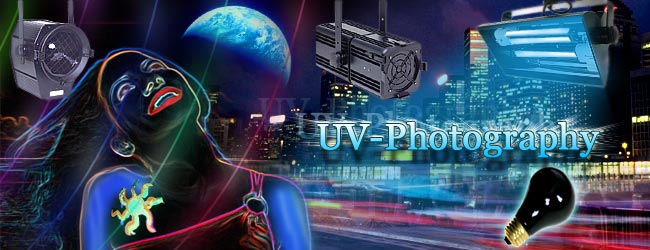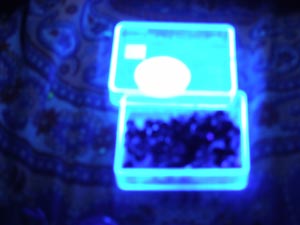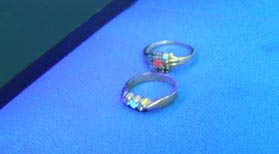A long time ago, I read “the case of the Drowsy Mosquito”, a novel by Erle Stanley Gardner in which the legal eagle Perry Mason in his attempt to solve a murder spends a night in a mining town. He hears a disturbing sound in the still of the night – a drowsy mosquito. Actually it is the sound of an Ultra violet lamp used by the killer to look for some treasure. When I think back now, I think it must have started my fascination with exploring the world under a new “light”.

Ultra violet photography is a very interesting field and with the advent of digital cameras it is possible for almost anyone to explore this fascinating field.
Ultra Violet or UV falls into this range – from 100 nm to 400 nm. High school physics tells you that the visible light spectrum spreads from 400 nm (violet) to 700 nm (red).
The electromagnetic energy covers a wide spectrum and the visible light waves form a smaller part.
The energy level depends on the wave length and at some intensity can cause damage to living organism.
Ultra violet can be further divided into 3 categories based on the wavelength.
- Short Wave Ultra Violet (UV-C): This covers the region of 200 – 280 nm. This light is dangerous and thus mostly used for germicidal application – sterilization and disinfection like purifying water and food.
- Medium Wave Ultra Violet (UV-B): This covers the region of 280 – 315 nm. This light causes sun burn if exposed for a longer duration and is implicated in skin cancer under prolonged exposure. It is used for tanning and curing some material.
- Long Wave Ultra Violet (UV-A): This covers the region of 315 – 400 nm. This light range is used for special effects and called as Black Light.
Ultra violet irradiation is often used for food processing and UV lights are used in industries and forensics.
Sources of UV Light:
Fluorescent bulbs with Wood’s glass – often called as Black Light are the most popular. They are called as BLB (Black Light Blue). These lamps have a darkened blue outer glass – hence the name. The kind of lamps you see in CSI TV serials is probably this type. This BLB produces output in the UV-A spectrum.
These lamps are used in entertainment applications, forensics and for checking counterfeit notes. You can use these lamps to light up your subjects for UV Photography with out needing to spend a fortune on expensive filters.
The water filter kind of Fluorescent bulb which puts out energy in UV-B range has normal clear outer glass.
Other major sources are Mercury Xenon Arc lamps, Mercury Vapor Lamps, UV LEDs (which produce output in the range of 380 to 400 nm) and Metal Halide Arc lamps to name a few.
Subjects for UV Photography:
You have a whole world of subjects to be captured under the glaring lights of UV. Many objects exhibit certain amount of fluorescence under UV illumination. Fluorescence is the effect that happens when an object absorbs light at a particular wavelength and releases a longer wave length light. Many special dyes glow under UV light.

Generally white objects tend to reflect UV light back making it appear brighter.
Some plastics glow under UV lights. Many materials like minerals, gems, body fluids and chemical markers or dyes fluoresce to varying degrees under UV lights.
Plants having chlorophyll which gives them the characteristic green color fluoresce to red glow under UV lighting. From antifreeze to club soda many common items exhibit fluorescence under UV. Vitamins A and Vitamin B – niacin and thiamine will fluoresce to yellow color when lit by UV.

Tooth whiteners and detergents exhibit fluorescence too. Many Flowers, bird plumage and fish skin appear differently under UV than they appear under normal light. Many animals have visual response which covers a wider spectrum than for the humans. May be their world is far richer in color than ours.
We will cover the basic techniques of UV Photography in a subsequent blog.
